
Empowering Kenyan Artisans with Safety and Opportunity
Safety and Opportunity for Kenyan Artisans This July, Unite to Light partnered with SAWA SAWA, an organization dedicated to empowering
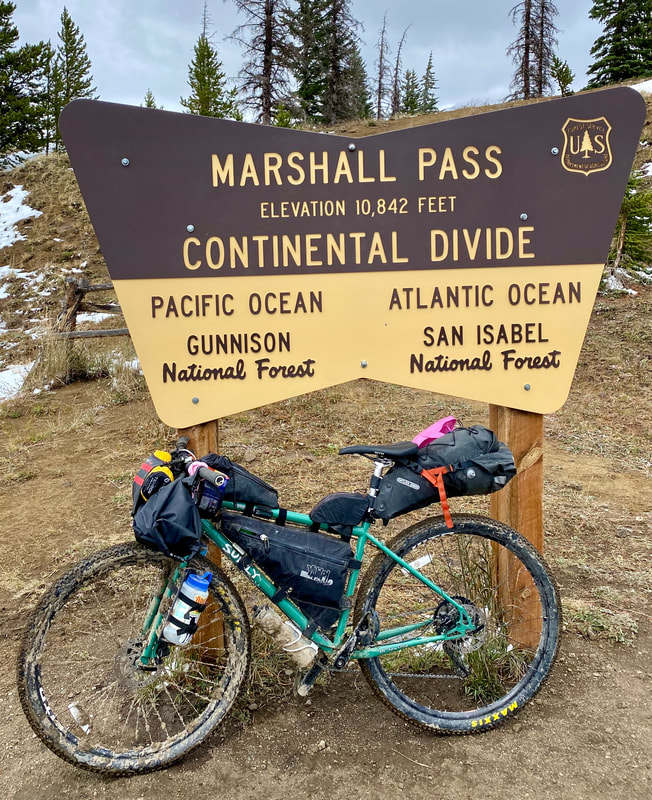
Bikepacking is an incredible way to explore the world and stay active outdoors. This sport allows you to access remote areas that are often missed by traditional travel methods. As you ride through charming small towns and peaceful trails, far from the noise of busy cities and automobiles, you’ll encounter the unexpected. This mix of excitement and unpredictability makes proper preparation essential. At Unite to Light, we understand the importance of being ready for the unknown. Here are our top 10 essentials to ensure you’re comfortable and prepared for your bikepacking adventure into uncharted territory.
3. Clothing
Choosing the right clothes for an extended trip can be one of the most stressful preparation pieces when you have limited space and are expecting a lot of variation in weather. I prefer to curate my clothing based on quality and the ability to layer. I always take the same basics, and when the weather is cold, I add in winter gloves, a pair of thicker socks, and a heavier down jacket. I pack for long and short trips similarly; taking advantage of sink or river washing opportunities for my intimates on longer trips. Note* I do not wear padded bike shorts when I cycle, this is purely personal preference.
Start with this basic packing list!
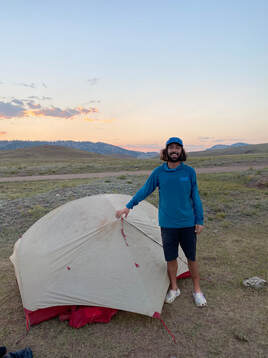
Daniel Connell in Wyoming of the Tour Divide
6. Shelter
There are all sorts of nifty shelter contraptions you can bring on your bike trip starting with the classic tent and moving to products like a bivy, a sleeping bag cover, a tarp, or simply “sleeping out” without any shelter at all. The choice on this one comes down to climate and personal preference. Some people prefer a bivy because it is small and lightweight, still providing privacy and protection from the elements. Certain folks feel claustrophobic in a bivy (check out the link to see one if you haven’t before). I operate off the old saying “Plan for the worst, hope for the best” so I pack a shelter in case of unexpected weather, like a torrential downpour or a desert sand storm. Plus, I love slumber parties with my travel partners so I take my Big Agnes Tiger Wall two person tent that we split into separate components for even(ish) carrying responsibilities.
7. Sleep Gear
This subject is oftentimes a hot topic for cyclists and seasoned tourists. Some have proclaimed that they love sleeping on the barren, rock solid ground of whatever natural environment they are exploring. While others insist on bringing an inflatable sleeping pad which they place on top of foam sleeping pad. The tradeoffs between comfort, weight and space are something each bikepacker will have to decide. I take a middle of the road approach and bring a Nemo Ultralight pad. I am careful to remove any sharp objects from my sleeping area so that I don’t awake to a flat pad. I also bring along a patch kit in case this does happen (as it will). A super compact Nemo Fillo Elite pillow always tags along on my adventures too.
As far as sleeping bags go, knowing yourself and your night time temp and comfort needs is important! I run cold so I bring the Sierra Design Women’s Cloud 20 degree bag on every trip. This doesn’t have any zippers which I like because they always give me trouble. It also has a place where your toes can breathe, something I need for comfort and ease of mind. Down-filled bags have the advantages of being super light and compact. A synthetic bag has the advantage of being water resistant when wet. If you decide to sleep without a shelter, you may want to take this into account.
8. Solar Power Supply
While most of the trip is human powered, having a remote power source is crucial for safety, wayfinding and capturing those epic sunrise/sunset pics on the road. I use my Unite to Light Chandler Charger Power Bank to revive my phone, GPS, rechargeable headlamp, bike lights, and Kindle. I can charge as I ride throughout the day by laying the panel out where it can absorb sunlight. Or on the occasion I find myself staying indoors for an evening, I can plug my power bank into a wall charger for an extra boost.
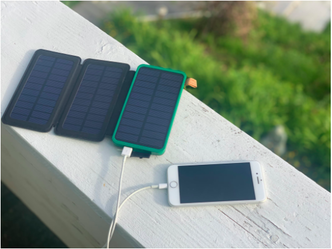
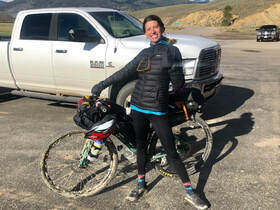
About the Author
Carolina (Lina) is a Program Coordinator for Unite to Light and a bikepacking enthusiast. She started cycling with her dad when she was in high school, completing both the STP ride from Seattle to Portland and the RSVP from Seattle to Vancouver, Canada. After completing her Bachelor’s degree, Lina endeavored on a bike tour along the Pacific Coast of the United States, starting at the most northwestern point of Washington State and ending in Tijuana, Mexico. Lina recently breached the world of bikepacking when she rode the Wyoming and Colorado segments of the Tour Divide route. Going back to complete New Mexico this summer between her season as a whitewater river guide on the Kern River in California, Lina is stoked to get back on the trail and continue expanding her knowledge of bikepacking. P.S. Carolina rides a Surly Bridge Club modified with mountain bike flat bars for her bikepacking adventures. Here and here are a couple online resources to pick a bike that is best for you and your budget.

Safety and Opportunity for Kenyan Artisans This July, Unite to Light partnered with SAWA SAWA, an organization dedicated to empowering
Lighting the Path: How Unite to Light Supports the UN Sustainable Development Goals At Unite to Light, our mission is
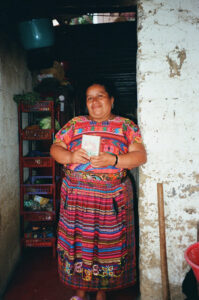
Brighter Futures in Guatemala: Light, Water, and Community Empowerment When we stepped into Gloria Tuyuc’s home in San Juan Comalapa,